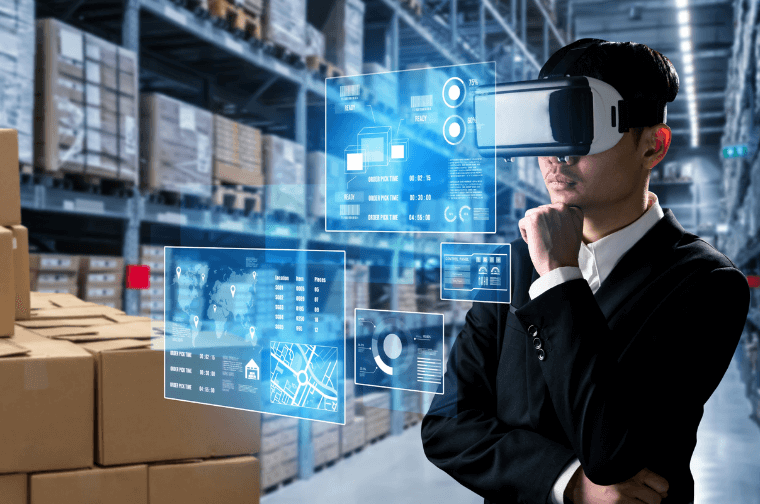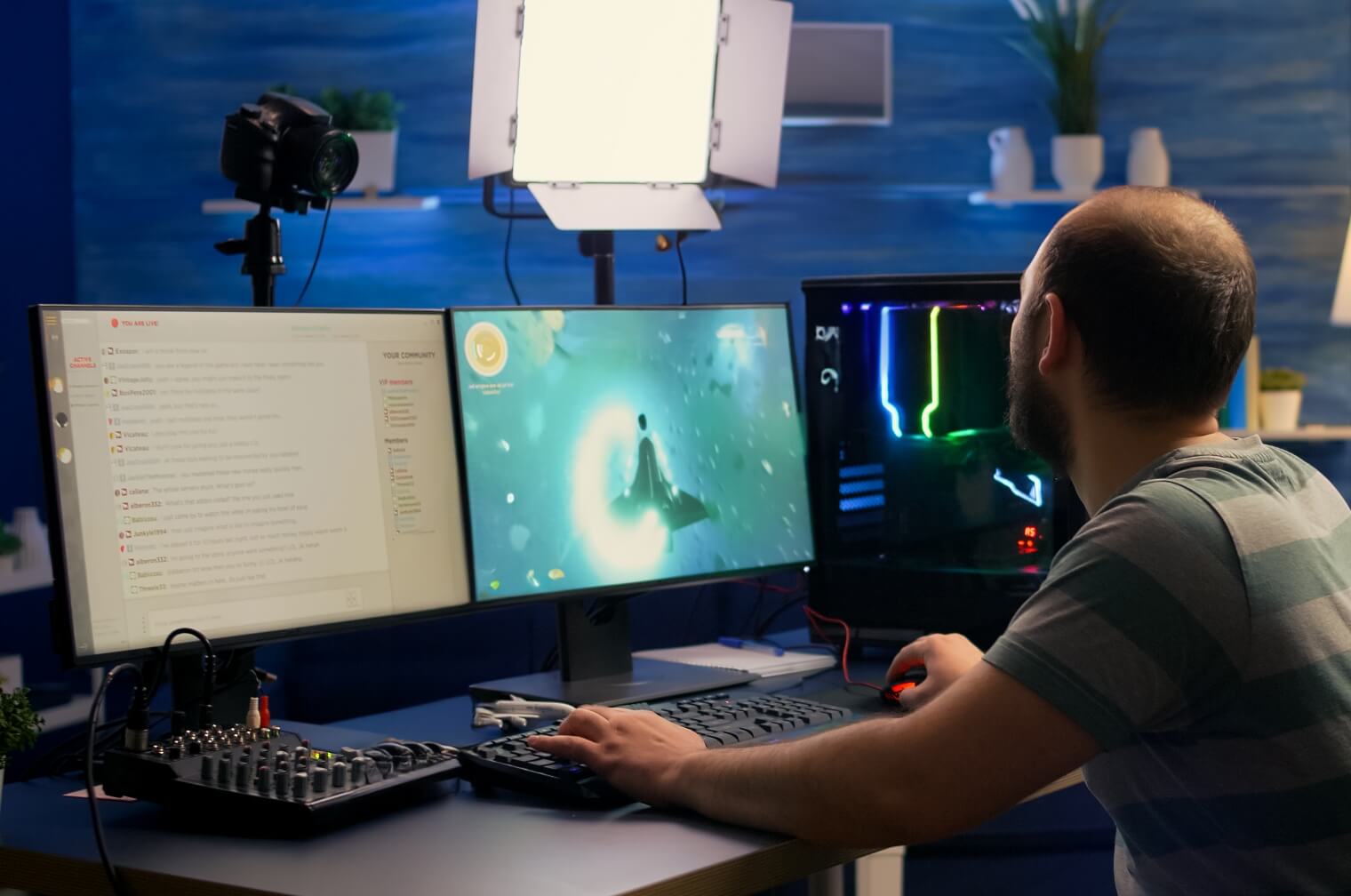Machine Learning and AI for revolution of Tech Companies are changing and streamlining businesses.
These days big brands like Lego, Samsung and IKEA are embracing 3D eCommerce development as a game-changing strategy. Many popular brands across the world are leveraging immersive technologies to transform their online presence and elevate customer engagement.
Why big brands need 3d eCommerce development?
As the technology landscape continues to evolve, brand owners are constantly finding new ways to engage their potential customers, boost sales and stay ahead of the market competition. Big brands are harnessing 3D eCommerce development to revolutionize their online presence and enhance customer engagement.
This comprehensive guide the significance of 3D eCommerce development in online retail, highlighting its various applications and benefits.
The rise of 3d eCommerce
3D eCommerce web development refers to the process of creating and deploying online shopping experiences that utilize three-dimensional (3D) technology to enhance the way consumers interact with products and make purchase decisions.
This innovative approach to eCommerce leverages various 3D technologies, including 3D modeling, augmented reality (AR), virtual reality (VR), and 3D visualization, to create immersive and engaging shopping environments. 3D eCommerce solutions involve the development of web and mobile applications that can support 3D content seamlessly. These applications should be responsive and user-friendly.
In the world of eCommerce, the desire to avoid buying a proverbial “pig in a poke” remains crucial for consumers. Buyers typically seek the opportunity to closely examine products, as in the case of offline shopping, before making a purchase decision. And this desire for confidence and a clear understanding of products amongst consumers is fueling the popularity of 3D commerce development.
Consumer engagement metrics: a steady upward climb
Big brands are increasingly investing in 3D eCommerce solutions, and the results are telling. As consumer engagement metrics steadily climb, the benefits of embracing this technology become increasingly evident.
Here are some interesting insights that reveal the trends of the eCommerce industry for 2023 & beyond.
- The global ecommerce market is expected to total $6.3 trillion in 2023 and account for 21.2% of total retail sales.
- According to a PR by Business Wire, Nextech AR is seeing e-commerce leaders accelerating their adoption of 3D models to drive their online sales growth.
- “The global megatrend of shopping online with ecommerce is rapidly expanding towards highlighting products in AR through 3D models. Widespread adoption is happening, and I am excited to see what new industries we will work with next as we are currently quoting on quite a few new ones” comments Nextech AR CEO, Evan Gappelberg
- 72% of consumers are interested in using immersive technologies to shop online and 62% of consumers are more likely to buy a product if they can see it in 3D, says a survey report by Accenture
- By the year 2025, 75% of the global population will be frequent AR users. Combining 3D commerce with AR will increase the conversion rate by up to 94%.
How 3d eCommerce boost your business
Let’s explore the key benefits of using 3D eCommerce that brands can derive from incorporating 3D eCommerce solutions into their online platforms, enhancing customer experiences, and driving business growth.
Enhanced product visualization and engagement
A 360-Degree View: 3D eCommerce significantly improves product visualization. Shoppers can examine products with a 360-degree view, zoom in on intricate details, and scrutinize textures and features. This level of visual detail ensures that customers know precisely what they’re buying, reducing the likelihood of returns and boosting their confidence in your brand.
Improved Product Understanding: By offering lifelike visualizations, 3D eCommerce solutions provide customers with a better understanding of product features, textures, and dimensions. This leads to increased confidence in their purchasing decisions, reducing buyer remorse and returns.
Tailored Product Configurations: Another benefit lies in personalized shopping experiences. 3D eCommerce allows you to offer customized product configurations, enabling customers to personalize items to their unique preferences. Whether it’s choosing colors, sizes, or features, this level of interactivity fosters a sense of personalization and exclusivity, driving customer satisfaction and brand loyalty.
Differentiation and competitive advantage
Stand Out in the Market: In a crowded online marketplace, brands need to differentiate themselves from competitors. 3D eCommerce solution development allows brands to showcase their products in a visually stunning and innovative way, setting them apart from the competition.
Cutting-Edge Brand Image: By adopting 3D Commerce development, brands position themselves as forward-thinking and technologically advanced. This helps attract tech-savvy customers and positions the brand as an industry leader, boosting credibility and trust.
Enhanced user digital experience: The immersive nature of 3D eCommerce creates a memorable and enjoyable shopping experience. Brands that prioritize user experience gain a competitive edge, as satisfied customers are more likely to return and recommend the brand to others.
Increased conversion rates and sales
Improved Purchase Confidence: 3D eCommerce solution development provides customers with a realistic representation of products, allowing them to make more informed purchasing decisions. This reduces uncertainty and boosts customer confidence, leading to higher conversion rates.
Upselling and Cross-Selling Opportunities: With 3D Commerce solutions, brands can showcase complementary products or accessories alongside the main product, increasing upselling and cross-selling opportunities. This drives higher average order values and boosts overall sales.
Better Social Media Engagement: Compelling 3D product visualizations are highly shareable on social media platforms. Customers are more likely to share visually appealing content, generating organic reach and brand exposure, further driving sales potential.
Cost savings and efficiency
Reduced Product Returns: The detailed product visualization offered by 3D Commerce solution significantly reduces product returns resulting from misaligned customer expectations. Customers have a clearer understanding of product attributes, leading to more accurate purchases.
Streamlined Manufacturing and Production: By integrating 3D eCommerce with product development processes, brands can streamline manufacturing and production workflows. 3D models can be used for prototyping, reducing time-to-market and minimizing costs.
Analytics and Insights: 3D eCommerce platforms provide valuable analytics and insights into customer behavior, such as product engagement and customization preferences. Brands can leverage this data to optimize marketing strategies, product offerings, and inventory management.
The future of virtual shopping
Here are some of the ways that virtual shopping is evolving and how 3D eCommerce is reshaping the future of online retail:
Virtual try-on: This is one of the most popular virtual shopping features, and it allows customers to virtually try on clothes, accessories, and other products before they buy them. This can be done using AR or VR technologies. AR allows customers to see how a product would look on them using their smartphone or tablet, while VR allows them to immerse themselves in a virtual environment where they can try on products from all angles.
3D product configurators: These allow customers to customize products to their liking before they buy them. For example, a customer could use a 3D configurator to choose the color, size, and material of a piece of furniture. This can help customers visualize how a product will look in their home or office before they commit to buying it.
Virtual showrooms: These allow customers to explore a store or product line without having to leave their homes. Virtual showrooms can be accessed through a computer or mobile device, and they often offer features such as 360-degree views of products, product videos, and customer reviews.
Live shopping: This is a new trend in virtual shopping that allows customers to interact with a salesperson or other customers in real-time. Live shopping events are often held on social media platforms, and they can be a great way for customers to get personalized advice and make informed purchase decisions.
As technology continues to develop, we can expect to see even more innovative and immersive shopping experiences emerge.
How big brands are using immersive technology for their e-commerce business
Here are some examples of how big brands are embracing the future of virtual shopping:
IKEA: This leading furniture brand has a virtual reality app that allows customers to virtually explore its stores and products. The app also includes a 3D product configurator that allows customers to customize furniture before they buy it.
Amazon: This popular ecommerce giant has a feature called “Virtual Try-On” that allows customers to virtually try on clothes using their smartphone or tablet. The feature uses AR technology to overlay the clothes on the customer’s body.
Walmart: This globally known retailer has a virtual shopping assistant called “Sam’s Virtual Assistant” that can help customers find products, compare prices, and place orders. The assistant can also answer questions about products and provide recommendations.
Levi’s: This fashion icon has a 3D product configurator that allows customers to customize jeans before they buy them. The configurator allows customers to choose the fit, wash, and color of the jeans.
Nike: The legendary footwear brand has a virtual showroom called “Nikeland” that allows customers to virtually explore its products and services. Nikeland is available on the Roblox gaming platform.
These are just a few examples of how big brands are harnessing the power of AR/VR and 3D eCommerce development. As technology continues to develop, we will see even more brands adopt virtual shopping solutions.
Expanding horizons: the world of 3d ecommerce development
In the ever-evolving realm of eCommerce, innovation knows no bounds. As we delve deeper into the world of 3D eCommerce development, it’s essential to recognize the critical role played by web and app development in harnessing the full potential of this transformative technology.
3d ecommerce web development: bridging the digital and physical
3D eCommerce web development plays a pivotal role in creating seamless online shopping experiences. It’s all about crafting websites that effortlessly integrate three-dimensional technology, such as 3D modeling, augmented reality (AR), virtual reality (VR), and interactive 3D visualizations.
Creating Immersive Web Environments: Websites are transformed into virtual showrooms, allowing customers to explore products from every angle. The integration of AR and VR enhances engagement, offering shoppers the ability to virtually try on products, customize their choices, and interact with items as if they were in a physical store.
Responsive and User-Friendly Designs: A fundamental aspect of 3D commerce solution development is ensuring that these immersive experiences are accessible to users across various devices, from desktop computers to mobile phones. Responsive and user-friendly designs ensure that customers can easily navigate, explore, and purchase products, regardless of their preferred platform.
3d ecommerce app development: shopping in the palm of your hand
3D eCommerce app development brings the power of immersive shopping right to the palm of your hand. Mobile applications equipped with 3D technology provide consumers with an even more personalized and convenient shopping experience.
On-the-Go Shopping: 3D eCommerce apps enable customers to shop while on the move, delivering product visualizations and customization features directly to their mobile devices. Shoppers can explore and interact with products from the convenience of their smartphones or tablets, making the shopping experience incredibly flexible and accessible.
Seamless Integration: In today’s digital landscape, the synergy between 3D eCommerce web development and app development is crucial. Brands are seamlessly integrating their web and mobile experiences, ensuring consistency and accessibility for their diverse customer base.
Wrap up
3D eCommerce development is a multifaceted journey that encompasses web and app development as essential pillars. As the retail landscape continues to evolve, embracing 3D eCommerce becomes a strategic imperative for those aiming to thrive in the digital marketplace.
The latest immersive technologies (AR/VR) are not only transforming online shopping but also redefining the way brands engage with their customers. As we move forward, the possibilities within this dynamic field are endless, promising a future where immersive, interactive, and personalized shopping experiences are the new norm.
Frequently asked questions
3D ecommerce development is the use of 3D models and immersive technologies to create a more realistic and interactive online shopping experience.
Big brands are leveraging 3D eCommerce to enhance customer engagement, differentiate themselves in the market, increase conversion rates, and streamline production processes.
Examples include virtual try-ons, 3D product configurators, virtual showrooms, and live shopping events.
It can help reduce product returns by providing customers with a more accurate representation of products, which leads to more informed purchasing decisions.
3D eCommerce technology isn’t exclusive to big brands. SMBs can also benefit by providing more engaging and informative online shopping experiences, which can help level the playing field in the highly competitive e-commerce landscape.









